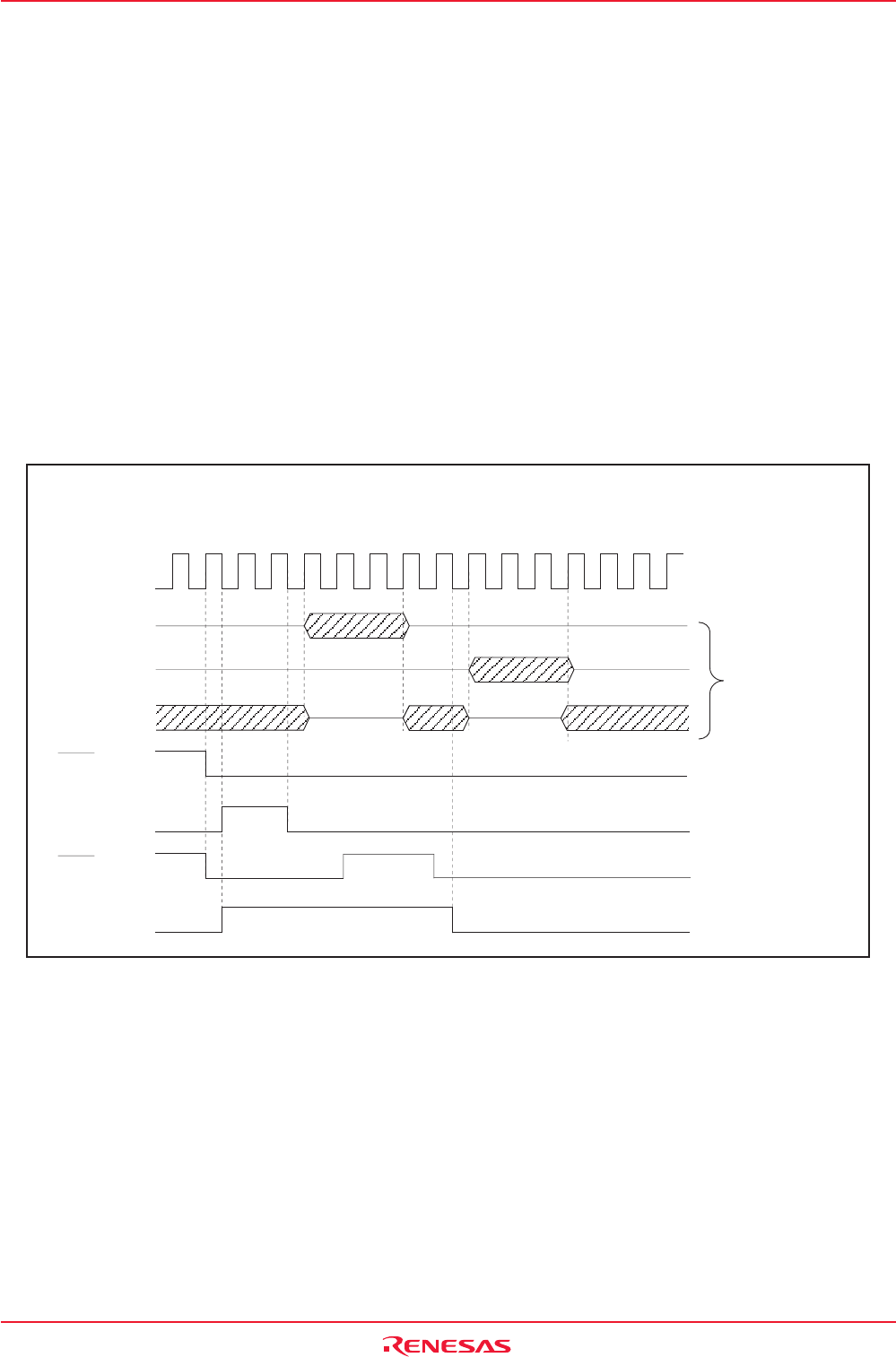
Rev.1.10 Jul 01, 2005 page 91 of 318
REJ09B0124-0110
M16C/6N Group (M16C/6NK, M16C/6NM) 11. DMAC
Under development
This document is under development and its contents are subject to change.
11.5 Channel Priority and DMA Transfer Timing
If both DMA0 and DMA1 are enabled and DMA transfer request signals from DMA0 and DMA1 are
detected active in the same sampling period (one period from a falling edge to the next falling edge of
BCLK), the DMAS bit on each channel is set to “1” (DMA requested) at the same time. In this case, the DMA
requests are arbitrated according to the channel priority, DMA0 > DMA1.
The following describes DMAC operation when DMA0 and DMA1 requests are detected active in the same
sampling period.
Figure 11.6 shows an example of DMA transfer effected by external factors.
In Figure 11.6, DMA0 request having priority is received first to start a transfer when a DMA0 request and
DMA1 request are generated simultaneously. After one DMA0 transfer is completed, a bus arbitration is
returned to the CPU. When the CPU has completed one bus access, a DMA1 transfer starts. After one
DMA1 transfer is completed, the bus arbitration is again returned to the CPU.
In addition, DMA requests cannot be counted up since each channel has one DMAS bit. Therefore, when
DMA requests, as DMA1 in Figure 11.6, occurs more than one time, the DMAS bit is set to “0” as soon as
getting the bus arbitration. The bus arbitration is returned to the CPU when one transfer is completed.
Figure 11.6 DMA Transfer by External Factors
An example where DMA requests for external causes are detected active at the same time,
a DMA transfer is executed in the shortest cycle.
BCLK
DMA0
DMA1
DMA0
request bit
DMA1
request bit
CPU
INT0
INT1
Bus arbitration


















